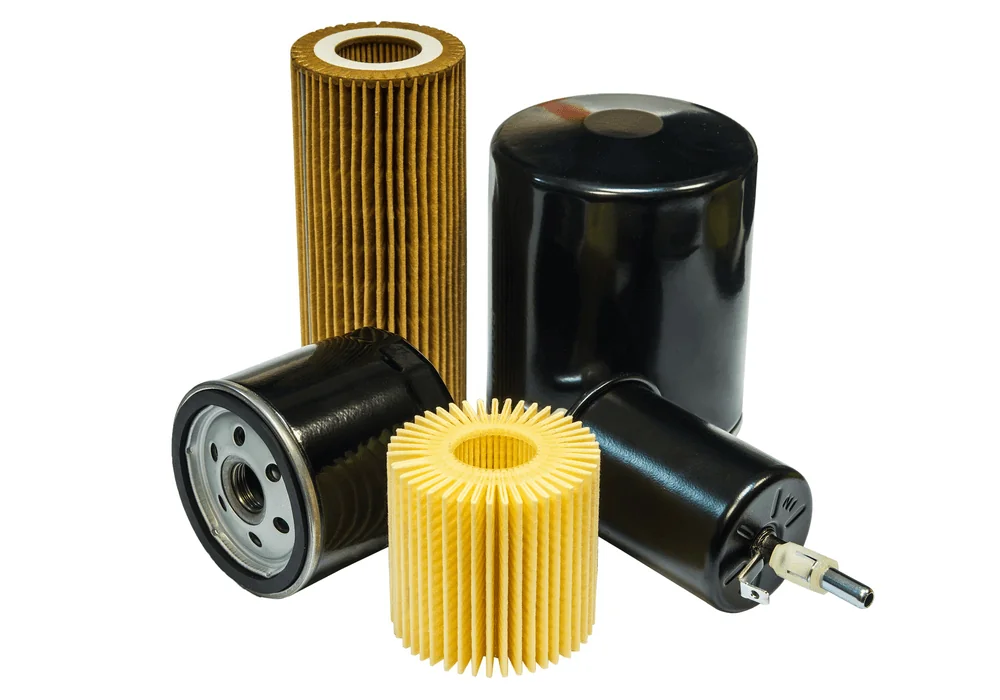Like any other car part, oil is important for reasons other than just plain lubrication. Heat absorption, engine cleaning, reliable starting and stopping are just three of the jobs this crucial liquid plays.
Oil is the lifeblood of any engine. For instance, the proper flow of oil past various metal parts ensures proper lubrication correctly. Imagine what would happen if the oil were allowed to fall below the amount needed for engine protection. The engine would, in short order, become a fused mass of metal.
More...
Lubrication Is Only Half The Story
Lubrication is only one-half of the oil story. The other half is heat. An essential function of oil is removing excess heat from the engine. Estimates are that nearly one-half of the heat moves from the engine block through the oiling system. Though most people don’t know about it, there is a piece of the cooling system dedicated to cooling nothing but the engine oil.
So, it makes sense that one of the critical pieces of equipment for your engine is the oil filter. The oil filter contains material that constantly sieves the oil as it passes through and takes out impurities and debris.
Oil, you see, is not a very clean or ordered environment. Even brand new from the bottle or can, oil is populated by ragged chemical chains that make even experienced engineers wince. Most of the time, those chains coexist quite nicely. Much of oil’s lubricating capability is due to the strings of molecules sliding over one another.
Oil Becomes Dirty Over Time

Over time, though, oil becomes dirty, and the chemical bonds begin to break down. The result is a critical automotive fluid that starts to look dirtier and dirtier, and it loses its ability to lubricate.
Yes, it does take time, somewhere between 3,000 to 7,500 miles, according to the oil change recommendations made by every auto manufacturer. Some instructions say that you can change engine oil after as many as 15,000 miles, though most won’t go that far.
With that said, let’s look at the types of oil that use different types of filters. There are three types of oil used in cars today:
- Synthetic
- Synthetic blend
- Conventional
The issue to understand when discussing oil is that there is no such thing as “synthetic oil.” Looking at the words that make up the oil, you would think that there somehow the oil was made of some other products. However, when you crack open the cover on a bottle of synthetic, you quickly discover that the liquid inside is oil. It smells like oil; it looks like oil; feels like oil. Indeed, the only thing that tells you there is something special about oil is the name.
What Is ‘Synthetic Oil?’
So, what exactly is “synthetic oil?” Synthetic oil is a highly purified product made of petroleum. However, instead of using a lesser grade of oil, the synthetic starts with the best grade oil on the market. The oil is then run through many tests to see what its carbon chains look like. If the particular batch of oil chosen has the right carbon chains, it then runs through the synthesizing process which reconfigures the strings of molecules so that they are straight and regular. The oil used as a basis for synthetic is also about as pure as you will find.
Synthetic oil provides vehicles with lubrication that delivers high levels of performance and lubrication. Full synthetic motor oil provides the following advantages:
- Higher viscosity levels
- Resistance to oxidation
- Resistance to thermal breakdown
- Reduced engine drag and better fuel efficiency
- Fights oil sludge
Synthetic oil is much more expensive than regular mineral oils. On average it is two to four times more expensive than standard regular or mineral oil. The key reasons to use it are if you find out it is the right oil for your car. Also, since it is thinner 5W-20, which is a good winter weight grade, it can be used for winters. And, since processing changes this oil, it can handle heat better which means it is also good for hot summer driving. Older engines can benefit from synthetic because it helps to prevent the buildup of harmful sludge.
What Is Synthetic Blend Oil?
Offering the best of both worlds, the synthetic blend has many of the best characteristics of synthetic at a lower price. Using a standard mineral oil, chemists use some of the hacks that are used on full synthetic to create an oil that is a pretty good cross between the conventional and synthetic. The synthetic blend oil uses additives so that the oil is more resistant to oxidation. It also has excellent low-temperature properties (it stays viscous). This type of midway point between conventional and full synthetic lets a driver have many of the features of synthetic while not paying a higher amount for this grade of oil.
What Is Conventional Oil?
Conventional oil is any standard automotive mineral oil used in light-duty situations. For instance, conventional oil is used in late-model vehicles with lower than average mileage to take care of light-duty driving situations.
Why You Need An Oil Filter
Since oil is so crucial to the operation of an engine, you have to ensure that oil receives careful treatment. The oil that is allowed to become dirty or sludgy is a threat to the proper functioning of a motor. The reason that oil with sludge deposits in it becomes thicker and does not lubricate nearly as well. And, it does not flow as smoothly through the engine block. Imagine what happens in an engine when sludgy oil tries to flow through the many oiling galleries in the engine; it does not do so for very long.
Filter Changes Are Important

The same is true of dirty engine oil. There is a difference between sludgy oil and dirty oil. Sludgy oil is thicker and doesn’t flow nearly as well as cleaner oil. Much of the responsibility for this is due to the lacs, waxes, and gums that are part of oil’s basic chemistry. Dirty oil, on the other hand, usually contains things like deposits of dirt that flow rather easily through the engine because of their suspension within the oil’s liquid base. Oil also becomes dirty over time as the additives clean out the engine’s nooks and crannies, leaving them cleaner. The dirt or deposits that were there become suspended in the oil, awaiting a chance.
Most of these dirty deposits or sludgy oil eventually run through the oil filter and most of the material is filtered out, though the oil, itself, does become darker and darker.
It is possible to run a vehicle without an oil filter, but you can see what will happen if there is no oil filter there to take care of removing dirt and other detritus from the oil. That is the critical need for oil filters. They keep the oil cleaner for a long time. Indeed, you are asked by the owner’s documentation to make sure that your vehicle has its lube (the frame receives grease at various lube points), oil, and filter at a regular interval. For most cars, it is 5,000 or 7,500 miles which is a reasonable interval as the lengths are typically the best lengths of time for active use of an oil filter.
So, you know that your oil filter should be changed regularly, as part of the LOF (lube, oil, filter). The reason, as noted, is that the oil filter takes contaminants out of the oil, keeping it as clean as possible. One thing to notice is that as your car’s engine heads get closer to the change date printed on the window sticker, the need for a filter change becomes more critical.
Types Of Oil Filter

Generally, there are two types of oil filters in use today, the canister-type and the cartridge-style. The canister-type is like the one most drivers know. It is the can-like device that is removed from the engine, using a special web-style wrench. You quickly replace the canister type and replace it by simply screwing it back in. Then, you can forget about it until the next oil change.
The second type of filter is the cartridge-style. Like the canister-type, the cartridge spins off the oil filter threads, and it is ready for the new filter material. It is the difference between the canister and the cartridge is that the canister comes fully assembled, while the cartridge relies on compatible inserts.
Oil Filter Materials
There are three major types of oil filter material available:
- Fiber – It is made up of cellulose material and stops most dirt down to about 8-10 microns. It cleans about 40 percent of the oil. The recommendation is that it is replaced every 3,000 to 5,000 miles.
- Synthetic – Like the fiber filter, the synthetic also uses a material that is more rigid and which filters out finer contaminants, to about 8-10 microns or so. It also filters contaminants in the 20-40 micron range. It takes out about 25 percent of the 20-40 micron contaminants; and about 25 percent of 8-10 micron contaminants.
- Microglass – Made of a glass-based material, the micro-glass filter takes out nearly all contaminants. Some have claimed that this can last for years, though, it is better to change it on your manufacturer’s schedule.
The 6 Best Oil Filters Reviewed
Through research with the assistance of Amazon, we have found the six best oil filters. The filters are a representative cross-section of the types of oil filters available. They are:
1

Via Amazon.com
Royal Purple Oil Filters are among the best on the market. To save space, we list this as our top choice. However, there are at least five others for sale on Amazon that will do a great job. Perhaps the neatest feature of the Royal Purple line is the filter’s added strength. They are somewhat more expensive than the others.
Pros
Cons
2

Via Amazon.com
The Purolator L10111 lasts for 5,000 miles – the average change range recommended by automakers – while removing 96.5 percent of the dirt and contaminants.
Pros
Cons
3

Via Amazon.com
The K+N-1008 Performance Oil Wrench-Off Oil Filter stands out because it is designed for removal two ways, using the standard web oil wrench or by using the ratchet-wrench style access on the top cover.
Pros
Cons
4

Via Amazon.com
There is a class of oil filter available that looks as if the manufacturer forgets a case as it appears to be only the filter material inside. This is a completely legitimate way of making things as it allows the manufacturer to maximize the filtering aspect. This allows the Mann filter to offer optimum protection from contaminants and debris.
Pros
Cons
5

Via Amazon.com
This compact-sized oil filter is the perfect fit for many smaller engines. It is roughly half the size of the standard oil filter yet works as well. The reason it can do this is that it uses a filter fiber that removes nearly every bit of dirt from the oil because of its folds and the material used internally. It also has improved oil flow.
Pros
Cons
6

Via Amazon.com
The Fram TG3682 Tough Guard Oil Filter is engineered to work with premium mineral or semi-synthetic oils. The manufacturer recommends changing this oil filter at 10,000 miles.
Pros
Cons
In Conclusion
During our research, we noted that there was no clearcut guide as to which oil filters are the best. For example, we never found any clearcut guidelines as to which type of filter is the overall best. So, perhaps the biggest conclusion or takeaway we can make about is this, synthetic oils are the best on the market right now. Using a top-line filter, designed for the manufactured lubricant, is the best way to go.
For other types of oil – semi-synthetic and conventional or mineral – you should look at the side panel on the can or bottle of oil you are considering and see:
- The type of oil that you are thinking of using and any recommendations
- Taking those recommendations seriously
- Using any recommendations made by the manufacturer
- Using our information as a guideline, as well.
